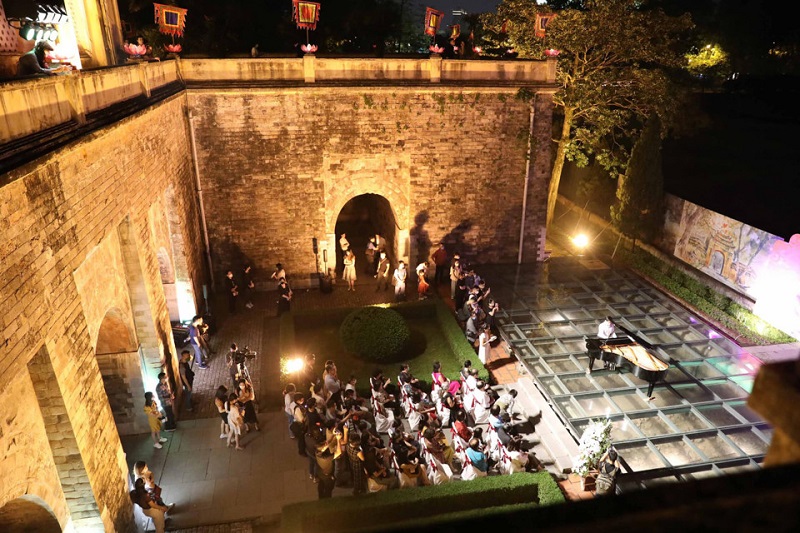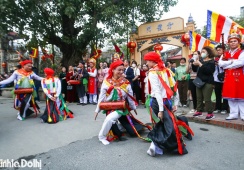
Vishal Sharma, Chair of the UNESCO World Heritage Committee, said this week that Vietnam's proposals for the conservation and development of the central sector of the Thang Long Imperial Citadel have been approved.
| Thang Long Imperial Citadel night tour. Photo: Lam Thanh/The Hanoi Times |
At its 46th working session in New Delhi, the World Heritage Committee commended Vietnam for its achievements and compliance with its obligations since the inscription of the Citadel on the World Heritage List in 2010. The approved dossier aims to restore the space and main hall of the Kinh Thien Palace, a central relic within the citadel.
Deputy Minister of Foreign Affairs Ha Kim Ngoc, Chairman of the Vietnam National Commission for UNESCO, highlighted Vietnam's cooperative and responsible spirit in working with the World Heritage Centre and the International Council on Monuments and Sites (ICOMOS), saying: "This cooperation is in line with the World Heritage Convention and aims to enhance the universal value of heritage."
Ngoc described the approval of the dossier as a tribute to the late Nguyen Phu Trong, general secretary of the Central Committee of the Communist Party of Vietnam, who championed the preservation of the citadel.
Lazare Eloundou Assomo, Director of the World Heritage Center, underscored the global significance of the dossier, which addresses new issues in heritage development.
He praised it as a model for cooperation between member states, UNESCO, and advisory bodies, and an example for preserving world heritage.
During the Committee session, Ngoc met with UNESCO Director-General Audrey Azoulay, World Heritage Committee Chair Sharma, and ICOMOS leaders.
They expressed their condolences on the passing of General Secretary Trong and praised Vietnam's contributions to UNESCO. They urged Vietnam to continue its leadership in heritage conservation and sustainable development.
The Imperial Citadel of Thang Long in Ba Dinh District, Hanoi has been a political and cultural center for over a millennium. It was built in the early 11th century during the Ly Dynasty and expanded by successive dynasties.
The remains of the citadel include important structures such as the Doan Mon Gate, the Flag Tower, and the Kinh Thien Palace.
In 2010, the Citadel was inscribed on the UNESCO World Heritage List for its universal value and cultural significance. It remains a key site for archaeological research and heritage conservation.



